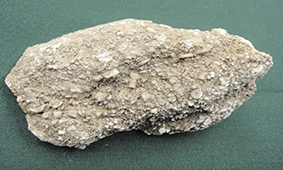
Viewpoint: NorthAm sulphur supply to tighten in 2020

US refiners have already begun preparing for the incoming cap on sulphur content in marine fuel that take effect 1 January by prioritizing lighter, sweeter crudes over sulphur-laden heavy sour. Spurred by changes to the crude slate along the Gulf coast, from January-September 2019 US sulphur output fell by 10pc compared to last year to 6mn t. This reduction is likely to be sustained, as refiners continue to favor lighter, sweeter crude feedstocks into 2020.
Exports out of the Gulf will likely rise from February 2020 as US terminal operator Martin Midstream replaces a shiploader at its Beaumont terminal to replace another that collapsed during a May 2019 storm. Exports of prilled sulphur have been heavily restricted since May, leaving US producers with little option but to sell within the US. Offshore values, while depressed, are likely to return higher netbacks to some Gulf refiners than domestic business. US Gulf exports typically have a freight advantage to Brazil versus supply from other typical sources, and may displace some Russian supply as the year progresses.
Developments in the phosphates market will be critical to the US sulphur balance.
US phosphate prices fell to decade lows over the past year as weak demand and rising production left the market awash in fertilizer. Rising exports and crop acreage growth in 2020 may contribute to rising prices. Argus forecast P2O5 consumption next year at 6pc greater than during the 2018-19 season on higher planted acres for corn and soybean.
Global sulphur production capacity will grow in 2020, particularly in the Middle East. Rising production from these new facilities coming online may dampen any price hikes seen in the coming year. Sulphur demand will grow in the key Chinese market, although rising domestic production and plentiful port stocks will temper the growth rate for imports in the coming year.
By Reginald Thompson


Trump weighs using $2 billion in CHIPS Act funding for critical minerals

Codelco cuts 2025 copper forecast after El Teniente mine collapse

Electra converts debt, launches $30M raise to jumpstart stalled cobalt refinery

Abcourt readies Sleeping Giant mill to pour first gold since 2014

Barrick’s Reko Diq in line for $410M ADB backing

Nevada army depot to serve as base for first US strategic minerals stockpile

Tailings could meet much of US critical mineral demand – study

Viridis unveils 200Mt initial reserve for Brazil rare earth project

SQM boosts lithium supply plans as prices flick higher

Energy Fuels soars on Vulcan Elements partnership

Northern Dynasty sticks to proposal in battle to lift Pebble mine veto

Giustra-backed mining firm teams up with informal miners in Colombia

Critical Metals signs agreement to supply rare earth to US government-funded facility

China extends rare earth controls to imported material

Galan Lithium proceeds with $13M financing for Argentina project

Silver price touches $39 as market weighs rate cut outlook

First Quantum drops plan to sell stakes in Zambia copper mines

Ivanhoe advances Kamoa dewatering plan, plans forecasts

Texas factory gives Chinese copper firm an edge in tariff war

Energy Fuels soars on Vulcan Elements partnership

Northern Dynasty sticks to proposal in battle to lift Pebble mine veto

Giustra-backed mining firm teams up with informal miners in Colombia

Critical Metals signs agreement to supply rare earth to US government-funded facility

China extends rare earth controls to imported material

Galan Lithium proceeds with $13M financing for Argentina project

Silver price touches $39 as market weighs rate cut outlook

First Quantum drops plan to sell stakes in Zambia copper mines

Ivanhoe advances Kamoa dewatering plan, plans forecasts

















